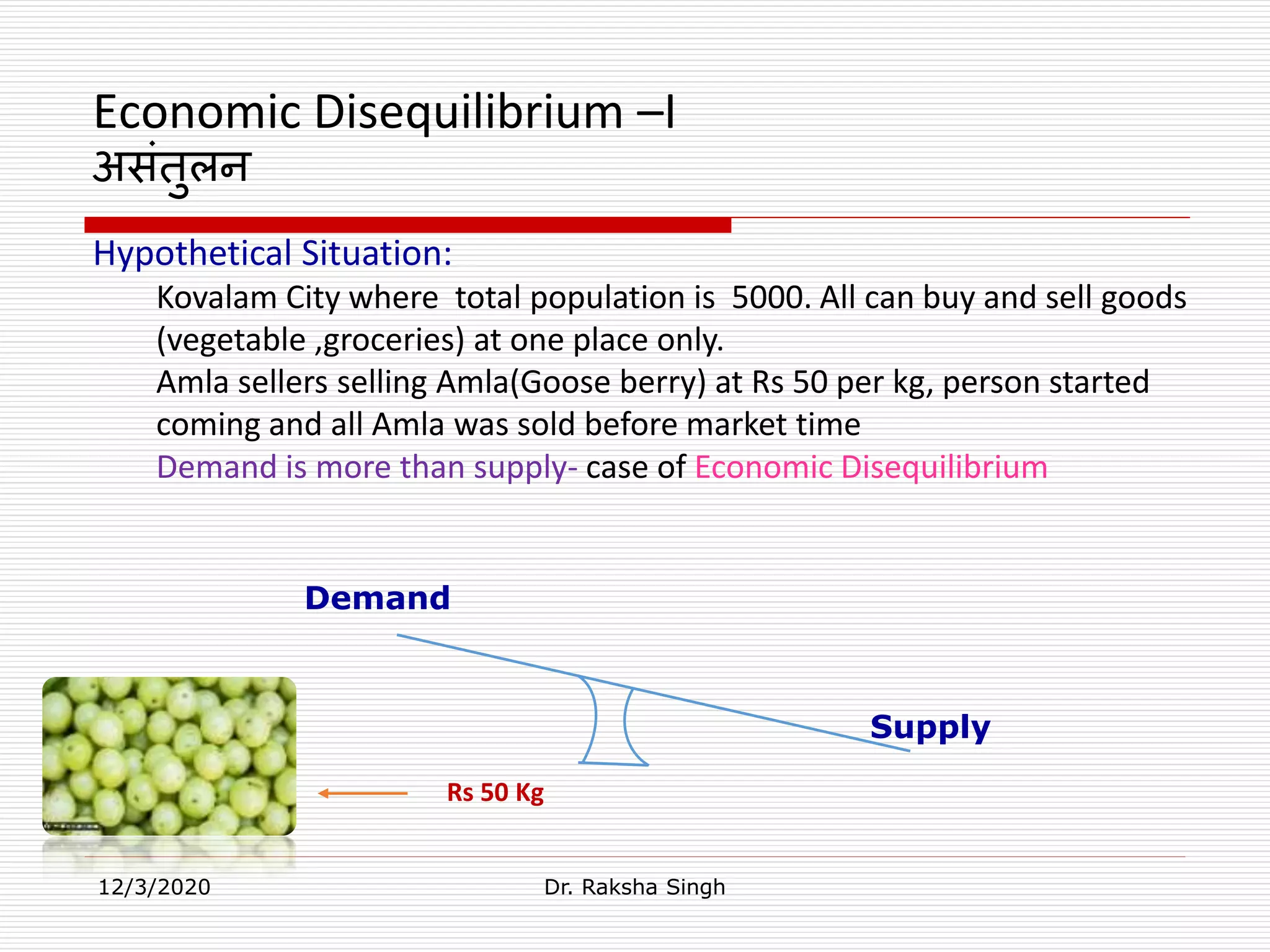The document discusses the concept of equilibrium in economics. It defines equilibrium as a state of balance where opposing forces neutralize each other. In microeconomics, market equilibrium occurs when supply equals demand. In macroeconomics, equilibrium is reached when aggregate demand equals aggregate supply. The document provides examples of economic disequilibrium and equilibrium, and examines how prices adjust via demand and supply mechanisms to reach equilibrium. Key terms in Hindi are also defined.

















